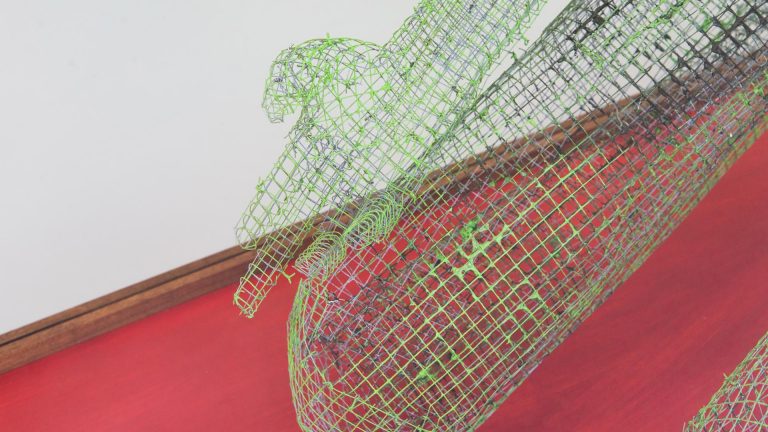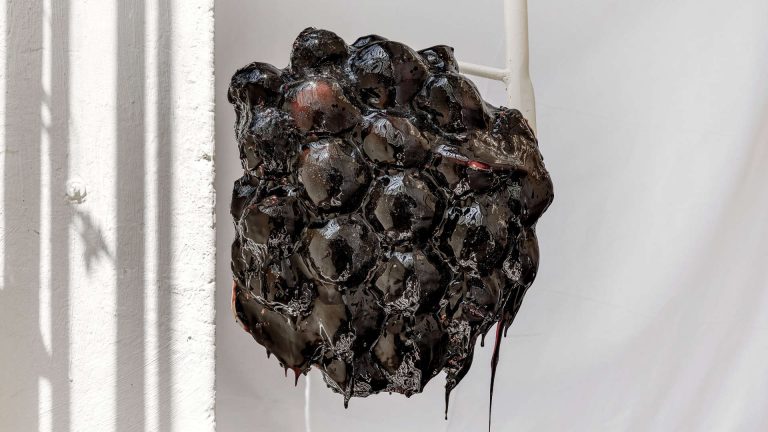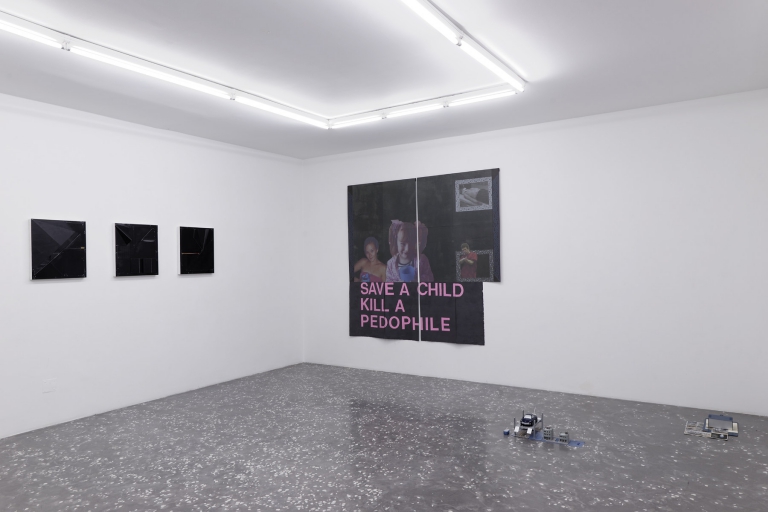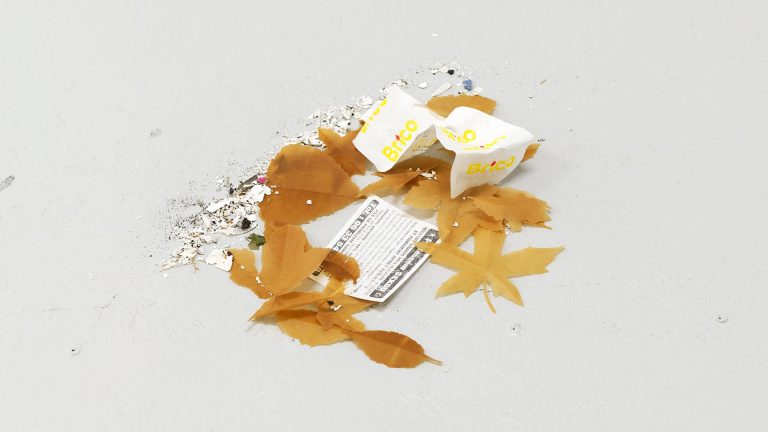Artist: My-Lan Hoang-Thuy
Exhibition title: Pale Violet
Venue: Galerie Derouillon, Paris, France
Date: October 16 – November 14, 2020
Photography: Aurélien Mole / all images copyright and courtesy of the artist and Galerie Derouillon, Paris
I studied Painting but I am not a painter, or maybe not yet! My expertise is in photography and after a number of years of practice, I have a pretty good idea of what it is to become a photographer. It boils down to pushing a button. Likewise, painting can essentially be boiled down to the act of spreading pigment on a surface. It is for this simple reason that it is possible to see a link between the Lascaux caves and contemporary painting.
So that’s what painting is all about. But being a painter is something else. To be a painter is to have understood something about Painting. As a non-painter, I can only talk about this “je ne sais quoi” by referring to what I understand about Photography. In this case, it is difficult to express what is understood about Painting. By reading books on the subject, you can understand Painting, but you do not understand anything about Painting. In order to do this, we must question ourselves about Painting, which implies, at the very least, spreading pigment on a surface.
My-Lan Hoang-Thuy’s questions about painting are interesting for at least two reasons. The first is about the times: what to do with paint today? What techniques are available to the painter that are likely to further extend what we define as Painting? My-Lan uses acrylic, a synthetic resin that coats the pigments and whose best – or worst – quality is that it dries quickly. Conversely, oil, with a slower siccativity, allows the paint to be reworked “fresh”. Acrylic also dries without cracking thanks to the elasticity of its polymers.
These qualities are at the heart of the uses that artists currently make of this material. The paint, in its strictest materiality, does not just act as a material, but it is considered as the medium itself. It is at the same time a technical and conceptual leap which can be made to go back up the hexagonal genealogy to the explorations of the sculptor César, who undoubtedly understood a little something about Sculpture.
The other technical parameter peculiar to her painting is an uncomplicated use of the printer in line with Wade Guyton’s experiments. It is the image printed on the painting that returns it to its background status. Because the paint, even when it is not oil-based, always tries to come to the surface! This upward movement creates the tension that inhabits these small format paintings.
In the artist’s previous series, the roles were clearly defined: acrylic was the material and printing was the image. Today acrylic combines patterns and forms, it already says much more in Painting. We can find a contemporary equivalent of the small Nabi painting from Paul Sérusier, entitled The Talisman. In short, painting, while continuing to create matter, creates images.
Which brings us to the second reason why the questions about painting that My-Lan poses are interesting. There are other images that inhabit these paintings: naked female bodies stretching like liquids on glass on the surface of these acrylic images. This repeating body is the artist’s body, but it is not self-portrait. As with Cindy Sherman’s early black-and-white photographs, it is, above all, the immediate availability of this body that makes it interesting. It is therefore a material, like with acrylic. This figure does not override the material and, while we are used to an image anchoring the painting with its representation, here everything seems like it is floating. The painting and the impression hesitate to unite within a composition or compete in order to win over our gaze.
The conclusion could be this: in the context of My-Lan’s paintings, acrylic painting poses the same question to these images of printed bodies as the screen of my phone to the images of the pornographic sites I consult.
-Aurélien Mole
























